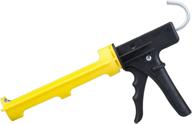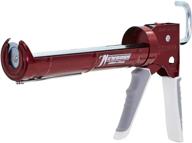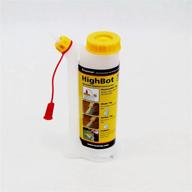
Review on 💡 NO OX ID Special: Advanced Solution for Electrical Contact Corrosion Protection by Rob Dixon

Not only suitable for radio amateurs or trains.
I got some of these to try and protect some surfaces where the dielectric might be bad (like low clamp force connectors). I was hoping it would be extremely conductive, but it only appears to be conductive in very small amounts and otherwise acts primarily as an insulator (e.g. has very low viscosity so it can be pushed out of connectors). However, it improves conductivity very well in very small amounts. (So, for example, if I stick two multimeter leads into one material, it shows too much resistance to read anything, but putting tiny bits of it on the leads themselves greatly improves the actual quality of their connection, which requires less effort to get them reading something on direct contact.) What I've learned from working with this so far is that it works best if you heat it to make it flow. This allows you to penetrate all the small pores of the metal surface (yes, metals are full of pores and imperfections, too small to be seen without high magnification, no matter how smooth they may appear), and this is key to preventing corrosion more than anything else. That way I can melt a little and then wipe it off very easily (so there's probably an incredibly thin film, but most of it is in the bumps and pores where protection is most needed as moisture can get in and stay ). I find cotton swabs work great for getting it where I want it and then cleaning the light. So far I've used it on many low power conductors like 3.5mm TRS jacks. I've found that if I pull the cotton almost completely out of the Q-Tip I can even get into the sockets (which is what I worry about the most as that's the weak link as you can easily swap out the plugs, but sockets). Connectors are much more difficult and sometimes impossible to replace.) Wax is applied, wax is removed. The joints seem to be much smoother and I believe they will last much longer now. Also, I have a few other things that use RCA jacks and I've definitely found some signs of oxidation (fortunately only on the outside so far) so now's a good time to put that in there. The ONLY thing I don't like. In addition, it cannot handle terribly hot temperatures. I couldn't find any exact specs, but one person said 85 (Fahrenheit I guess?), which seems incredible anyway. Of course, when I apply it with a heat gun, it melts very quickly into an almost free-flowing liquid. This limits many potential uses where you risk a leak. Something like a coax screw connector would be fine on the outside too, but I'm a little suspicious of battery terminals (which I've heard people say conductive greases will leak at high enough temperatures). .) I'll try to use dielectric everywhere for a while but no-ox in the actual binding posts where conductivity matters most and I'll just have to wait and see. I wish it had a wider operating range - something that could work, at least in hot enough conditions. It looks like you should use dielectric grease instead.
- Easy to read control panel
- There are new competitors
New products
Comments (0)
Top products in 🛢️ Industrial Lubricants
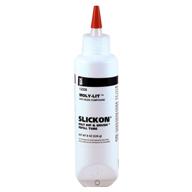
🧪 MOLY LIT 12008: High-Performance Molybdenum Disulfide Anti-Seize Lubricant

4 Review
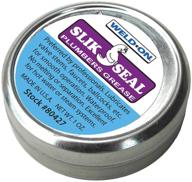
🔧 Highly Effective Weldon 80427 Clear Plumbers Grease: Your Ultimate Solution

3 Review
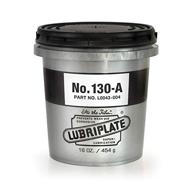
🔧 Lubriplate L0043 004 No 130 Grease: High-Performance Lubricant for Optimal Performance

3 Review

🛢️ Tribology Tech Lube 752436100044 FG HD Cart: High-Temperature Lubrication at Its Best

4 Review




